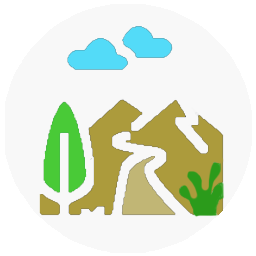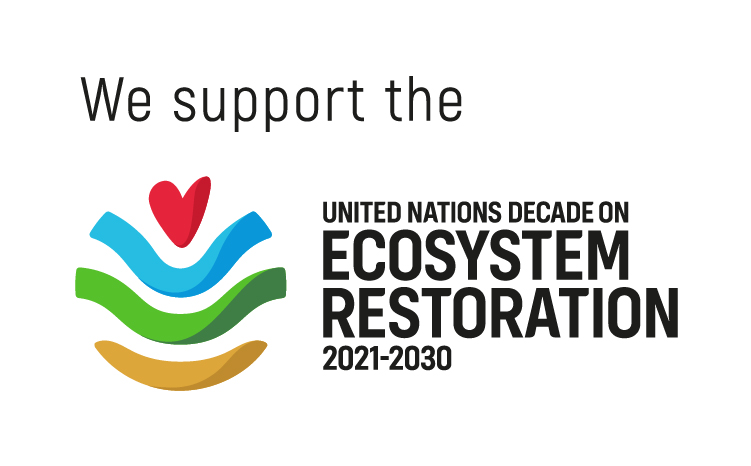Trees for Ecotourism™
Tsomgo, Sikkim, India
Project Purpose
Trees for the HimalayasPlant Now Location

The plantation project is implemented in the catchment zone of Tsomgo watershed at the fringe of Kyongnosla Alpine Sanctuary, Gnathang Block, East Sikkim.

Enhancement of
Biodiversity

Carbon Sequestration

Promotion of
Ecotourism

Increase in
Green Cover

Generation of
Rural Employment

Improvement of
Wildlife Habitats
Why Trees?
Tsomgo Lake, also known as Changu Lake, is a glacial lake and a popular tourist destination in the East Sikkim district. It is at a distance of about 40 km from the capital city, Gangtok. The Tsomgo area is located at the fringe of Kyongnosla Alpine Sanctuary. It is a biodiversity-rich environment home to red pandas, Himalayan black bears, and musk deer, as well as migratory birds. These birds and animals find shelter and nourishment in trees. The catchment also forms an ideal habitat for several critical floral and faunal species found in the region.
For years, Tsomgo remained undisturbed due to its poor accessibility, however, after the area opened for tourism in 1980, tourist traffic has been growing at an alarming rate. The fragile montane ecosystem in the area has been under stress for the past decade due to the detrimental effects of tourism on the ecosystem. This includes pollution and infrastructure development as well as the depletion of local natural resources that often result in rampant deforestation and other ecological destruction. A thesis by Nakul Chettri suggests that the forest cover near human settlements has been significantly depleted in comparison to relatively untouched areas.[1] Small-scale human pressures, such as firewood, fodder, timber extraction, and grazing have left an indelible mark on the corridor, as stated in a study by N. Chettri, E. Sharma, D.C. Deb in 2001.[2]
Additionally, the existing network of protected areas (PA) in the Sikkim Himalayan region is inadequate to effectively conserve its unique and native plant varieties. Moreover, it is anticipated that these circumstances will worsen in the future as a result of climate change, which will result in the loss of habitats for certain species and shifts in the distribution ranges of both individual species and entire communities. According to a study by Kumar Manisha and Maharaj K. Pandita, the high-elevation regions and upper reaches of Sikkim Himalaya are top-priority areas for conservation.[3]
Improved forest health will have a substantial impact on boosting alternative tourism and enhancing local livelihood, providing a win-win situation in terms of social, environmental, and cultural issues. Planting trees will also help to protect wildlife habitat by refraining the wildlife from entering human settlements, hence preventing human-animal conflict. This project aims to heal the region’s ecosystem by nurturing holistic development on all ends. Ecotourism has revolutionised a new way of life, one that blends the old and the new. According to a study by Sylvie Blangy and Hitesh Mehta, it unites conservation, communities, and sustainable travel to work towards ecological restoration.[4]
Our plantation project will not only play a crucial role in sequestering carbon dioxide from the atmosphere but also aid the local community in improving their socio-economic condition. As stated by a study from Tourism Management Perspectives, preserving indigenous culture and restoring the environment can go hand in hand with ecotourism.[5]
Tree Species
The variety in tree plantation depends upon agro-climatic conditions and the benefit of planting trees in terms of flowers, fruits, fodder, fuel and non-timber forest produce for the local community as well as insects, birds, and animals.
For the Trees for Ecotourism™ project in the catchment zone of the Tsomgo watershed, Rhododendron (Rhododendron spp.)[6] and Silver fur (Abies alba)[7] were selected since they can resist extreme weather like snow. Salix (Salix sikkimensis)[8] is a traditional medicine used to cure painful musculoskeletal joint pain, inflammation, and fever. Pines/Dhupi[9] (Juniperus indica) is used to create medication and treat gastrointestinal (GI) infections and intestinal worms, as well as upset stomach, intestinal gas (flatulence), heartburn, bloating, and loss of appetite. It is used as a fragrance in soaps and cosmetics manufacture.
Social Impact
Planting trees will help promote sustainable eco-tourism and wildlife tourism by improving overall ecological health. The plantation of flowering species enhances the overall aesthetic appearance of the region. Plantations of fruiting and flowering species in the forest area is also helpful in securing and enhancing the bird habitat in the area.
Additionally, planting trees aids in protecting wildlife habitat in order to promote conservation and prevent wildlife from entering human settlements, hence preventing human-animal conflict. Thus, the planted species serve primary purposes such as animal repellent, fodder source, livelihood diversification, and biodiversity benefits.
Our project generates employment opportunities for the local communities since we are committed to working closely with them. They are involved in preparing the saplings in the nursery, transportation of the saplings, plantation and maintenance. Tree plantation activities provide employment for women as well. The workdays thus generated allow these women to contribute towards their household incomes.
To ensure that our efforts have a positive impact on the environment, we conduct a rigorous assessment of the site and carefully select the trees that align with the location and the community. The plantation facilitates the conversion of degraded land into primary forests with indigenous tree plantation. It works towards the preservation of the area’s green cover and aids in conservation efforts.
[1]Chettri,N.,2000.ImpactofhabitatdisturbancesonbirdandbutterflycommunitiesalongYuksam–DzongritrekkingtrailinKhanchendzongaBiosphereReserve.PhDthesis,NorthBengalUniversity,India.
[2] Chettri, N., Sharma, E., & Deb, D. C. (2001). Bird community structure along a trekking corridor of Sikkim Himalaya: a conservation perspective. Biological Conservation, 102(1), 1-16.
[3] Manish, K., & Pandit, M. K. (2019). Identifying conservation priorities for plant species in the Himalaya in current and future climates: A case study from Sikkim Himalaya, India. Biological Conservation, 233, 176-184.
[4] Blangy, S., & Mehta, H. (2006). Ecotourism and ecological restoration. Journal for Nature Conservation, 14(3-4), 233-236.
[5] Ashok, S., Tewari, H. R., Behera, M. D., &; Majumdar, A. (2017). Development of ecotourism sustainability assessment framework employing Delphi, C&I and participatory methods: A case study of KBR, West Sikkim, India. Tourism Management Perspectives, 21, 24-41.
[6] Choudhary, S., Thakur, S., Majeed, A., & Bhardwaj, P. (2021). Adaptability of rhododendrons in high altitude habitats. Journal of Forestry Research, 32, 449-460.
[7] Koprowski, M. (2013). Reaction of silver fir (Abies alba) growing outside its natural range to extreme weather events and a long-term increase in march temperature. Tree-ring research, 69(2), 49-61.
[8] Tawfeek, N., Mahmoud, M. F., Hamdan, D. I., Sobeh, M., Farrag, N., Wink, M., & El-Shazly, A. M. (2021). Phytochemistry, pharmacology and medicinal uses of plants of the genus Salix: An updated review. Frontiers in pharmacology, 12, 593856.
[9] Nepal, I. U. C. N. (2000). National Register of MedicinaI Plants. Kathmandu: IUCN Nepal.









